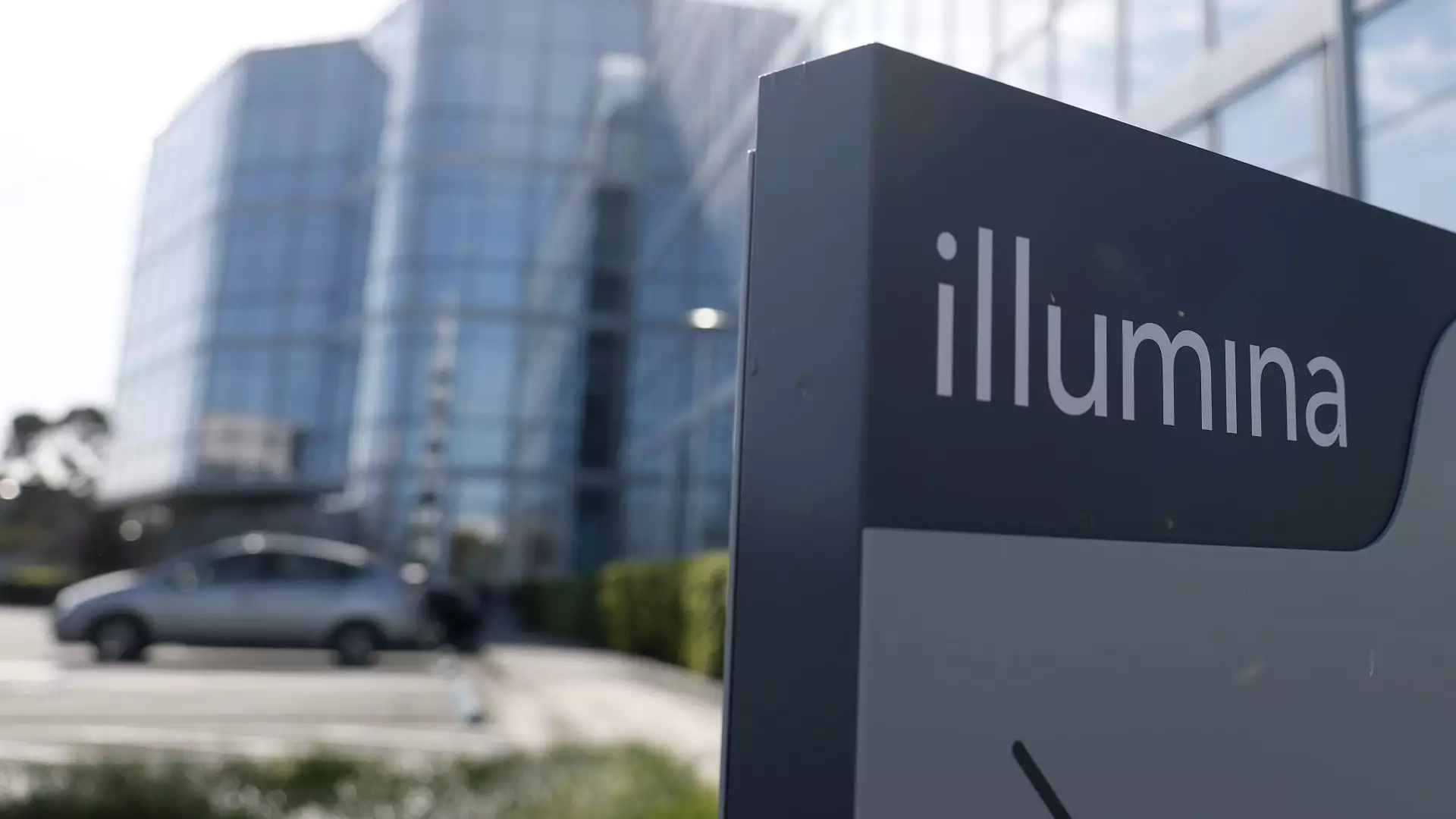Illumina Inc., a company traditionally seen as a titan in genomic sequencing technology, finds itself grappling with a tumultuous landscape that has markedly shifted since the peak of its pandemic-fueled growth. Once riding high on an unprecedented wave of demand, Illumina’s narrative has transformed into one marked by a whiff of skepticism and concern. With market value dwindling to approximately $12.67 billion—down from a zenith of $70 billion—the company’s trajectory warrants a closer examination of critical factors contributing to its current malaise.
Illumina thrived during the COVID-19 pandemic when its DNA sequencing technology became indispensable for genomic analysis and diagnostics. Revenue surged by 40%, catapulting earnings that were once robust. However, as demand for its sequencing machines dipped post-pandemic, the company was caught in a whirlwind of setbacks, exacerbated by its costly decision-making, especially regarding its Grail business acquisition saga. This journey from high-flying growth to current stock prices stagnating around $80 a share evokes caution among investors.
The Grail Debacle and Regulatory Overreach
The most significant blunder in Illumina’s recent history hinges on its entanglement with the Grail business, a venture conceived in 2015 and spun out shortly thereafter. The pursuit to reacquire Grail for $8 billion, particularly without the Federal Trade Commission’s blessing, illustrates a risky and arguably reckless approach to corporate strategy. The acquisition’s eventual blockade by the European Commission not only resulted in a substantial fine but also illuminated regulatory vulnerabilities that exposed Illumina to global scrutiny.
In a corporate environment increasingly dominated by regulatory compliance, Illumina’s aggressive strategies can be perceived as a gamble that failed to pay off. Not only did this expensive misstep contribute to the company’s decline, but it also showcased a boardroom strategy that appears disconnected from the realities of an era when accurate forecasting and risk management are paramount.
Market Dynamics: Navigating Geopolitical Tensions
What compounds Illumina’s challenges are geopolitical tensions and investment uncertainties affecting biotech funding. Potential ramifications of unstable relations with key markets like Russia and China put Illumina at a crossroads. These geopolitical issues have dire implications for revenues that hinge on international partnerships and market performance, further destabilizing an already precarious situation.
Investor confidence has become fragile as geopolitical disruptions intertwine with evolutions within biotech funding, particularly concerning the National Institutes of Health (NIH) landscape. Discontent among stakeholders regarding funding uncertainties has only amplified the pressure felt by Illumina as it grapples with sustaining its foothold in a highly competitive landscape.
A New Leadership Era: Can It Resurrect Illumina?
In a bid to address these dire circumstances, Illumina has begun reshuffling its leadership. The selection of Keith Meister from Corvex Management promises potential value as a seasoned board member. However, past experiences remind us that new leadership does not automatically translate into new success. While Meister has an impressive track record, the challenges in transitioning to innovative sequencing technologies like the NovaSeq X present obstacles that require not just strategic foresight but also an alignment among board members regarding long-term goals.
Investors may ask how willing this new leadership is to adopt a pragmatic approach that prioritizes stable growth over the previous fervor for rapid market capture. A thoughtful, possibly conservative strategy might better serve Illumina in regaining footing and rebuilding its reputation in the biotechnology sector.
The Razor-and-Blade Business Model: A Double-Edged Sword
Illumina operates under a razor-and-blade model, where high-margin consumables drive sustained revenue in parallel to its less profitable machine sales. While this model appears solid on paper, the dependency on consumable sales can create volatility. If the market perceives Illumina’s transition to new sequencing technologies as turbulent or fraught with difficulty, customers may pivot toward other vendors offering more assured products and services.
This shift in consumer confidence could lead to further declines in revenue and shareholder value, a risk that none of the newly reassigned executives would want to gamble with. Ultimately, it is the execution of this model in conjunction with a sound operational strategy that will dictate Illumina’s future in a competitive ecosystem.
Cautious Optimism Amidst An Uncertain Landscape
Amidst the swirling uncertainties, there is a faint glimmer of optimism. Illumina’s technology is still highly regarded, holding roughly 80% of the global market share in gene sequencing. A streamlined organization with an experienced board might yet navigate the current adversities. However, the skepticism surrounding Illumina’s ability to rebound necessitates a sober view ahead. The industry is unforgiving, and the lessons learned from past mistakes must inform future strategic decisions.
The story of Illumina serves as a microcosm of broader trends in technology and finance, underscoring the importance of adaptability, prudent risk assessment, and an unwavering focus on customer needs. As stakeholders await signs of recovery, one thing remains clear: Illumina’s journey is fraught with challenges that offer important lessons in corporate responsibility and strategic agility.

